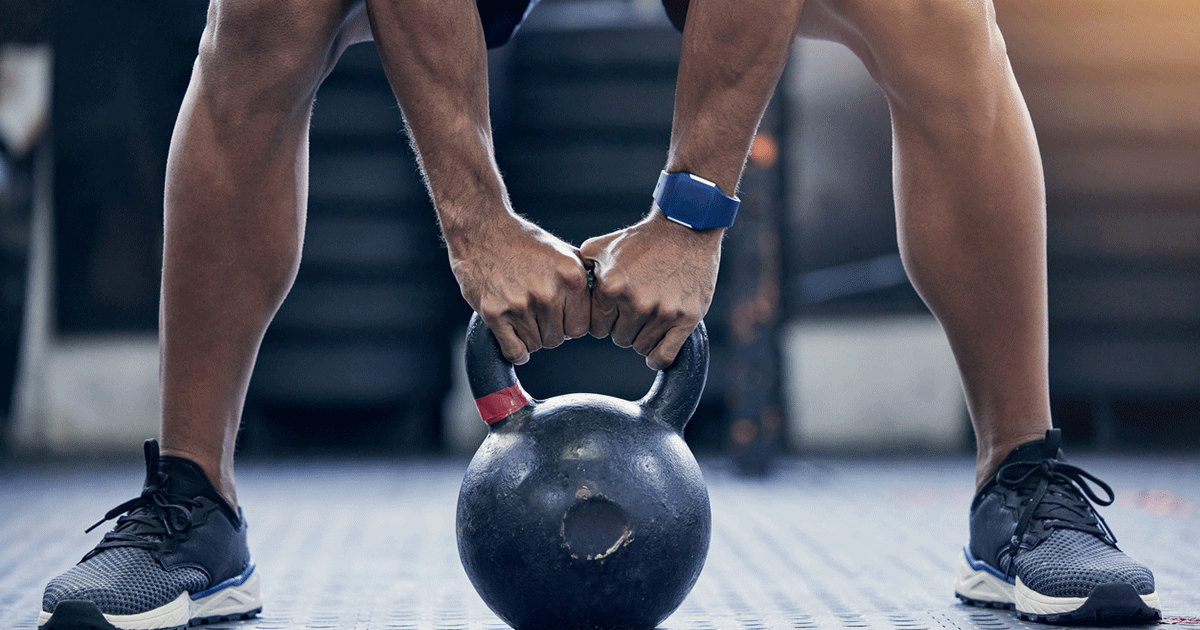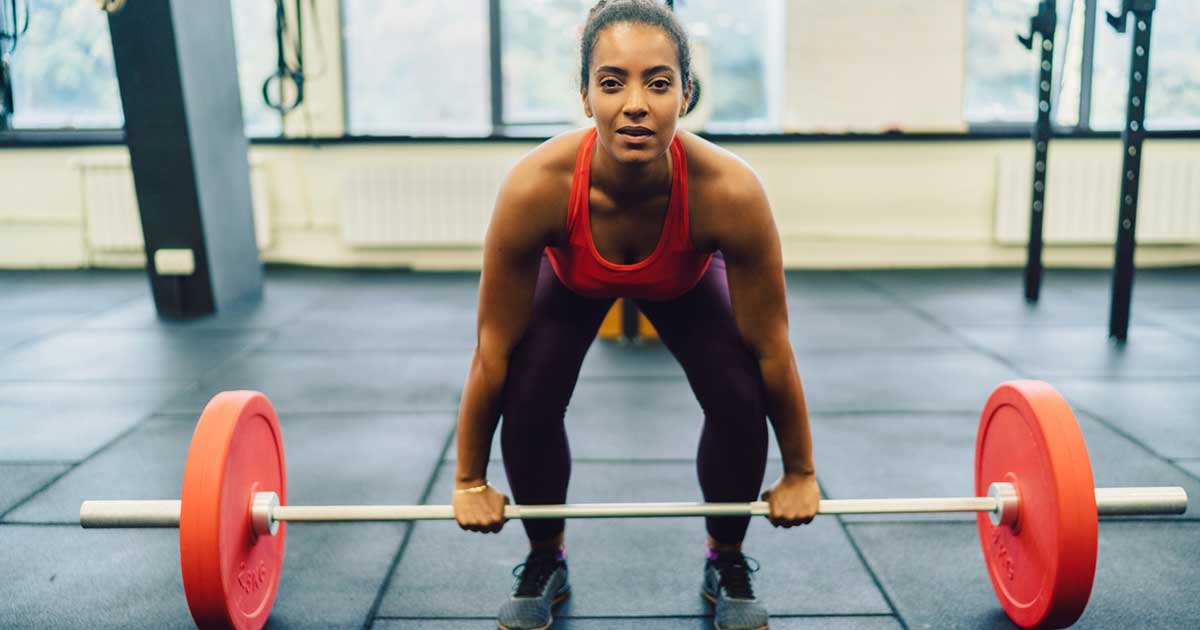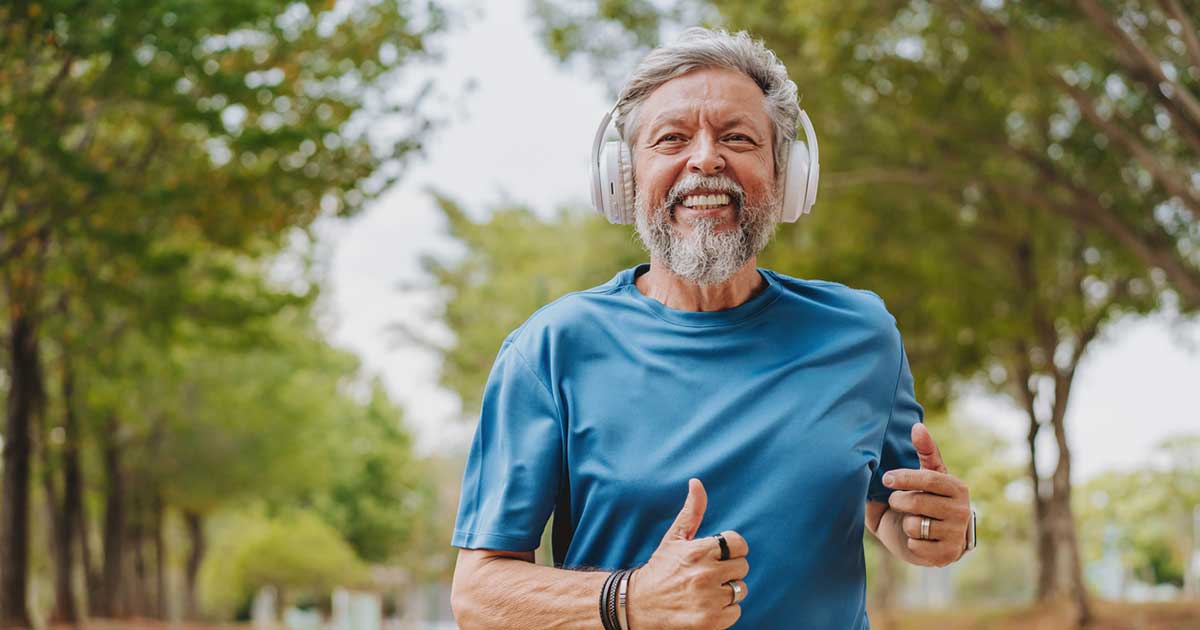
Advice to improve your movement, fitness, and overall health from the #1 in orthopedics in the U.S.
8 Exercises to Strengthen Your Posterior Chain
Having a strong posterior chain can help you with everything from daily tasks to lowering your risk for arthritis and bone loss.
Advice to improve your movement, fitness, and overall health from the #1 in orthopedics in the U.S.

When talking about the posterior chain, people are typically referencing the glutes, particularly the glute max muscles, says Mathew Welch, MS, CSCS, ATC, USAW-1, an exercise physiologist at HSS Sports Medicine Institute West Side. The rest of the chain includes the minor glute muscles, hamstrings and calves. Some of the muscles around the back that stabilize the lumbar (lower) spine are also considered part of the chain, Welch says. “A strong posterior chain is important for performance and also for being able to do activities of daily life—like running, jumping, and changing directions as you move."
Strengthening the posterior chain is also important for preventing age-related bone and muscle mass loss, a condition known as sarcopenia, he adds. As you get older, if you don't strength train these muscle groups properly and often enough, you may see even more decline in your muscle mass. “You might also succumb to an increased risk for arthritis and other health issues, including injuries,” Welch says.
Lower back pain can also be related to deficiencies in the posterior chain. “The lower back is there for stability and support,” Welch says. “So you have to make sure you're training that to some degree as well.”
Exercises That Strengthen the Posterior Chain
These posterior chain exercises deliver the biggest bang for your buck and are the ones Welch recommends to clients.
Here’s a sample routine he created.
- Do each of these exercises 1 to 2 times per week.
- Performing 3 to 6 sets of 5 to 10 reps per muscle group per week is a great starting point for most people.
- Don’t hold your breath! Focus on breathing deeply, filling your lungs, as you perform each move.
With any of these isolation exercises, start with more reps and lighter weights, or just use your body weight, suggests Welch. You can progressively add weight to these movements over time. “For example, in the glute bridge exercises below, start off holding a dumbbell across your lap, and eventually put a weighted bar across your lap while bridging up,” Welch says.
Deadlifts
These are going to isolate your hamstrings and your glutes.
- Start with your feet shoulder width apart, knees slightly bent, weight distributed evenly between the ball and heel of your foot. Your weights (dumbbells, kettlebells, or barbell) should be on the floor slightly in front of your feet.
- Contract your core (imagine someone’s about to punch you in the stomach). Hinge your hips back as if to tap a wall behind you with your butt as your chest and head reach forward. Your gaze should follow this motion to keep your head aligned with your spine. Make sure your ribs stay stacked over your hips and you don’t arch your back.
- When you get to the point where you can’t hinge anymore because your hamstrings won’t allow it, bend your knees and keep lowering your body with your hips back until your hands reach the weights sitting on the floor.
- Inhale to prepare to lift the weights or bar. Grip the weights in both hands while squeezing your shoulders together and dropping them down your back (imagine there’s a pencil between them that you don’t want to fall). Keep your spine straight.
- Exhale and squeeze your glutes to initiate the hips driving up and forward as you stand with the weights in your hands, pressing the ground away from you.
- At the top of the stance, the front of your hips should be completely upright and your glutes squeezed, butt fully tucked under, quads tight, core engaged. This is a key step that will protect your back.
- Hinge your hips backward, head and chest reaching forward with the weights close to your body as you lower them back down to the ground and repeat.
You could also do deadlift variations with barbells, kettlebells, and machines.
Romanian deadlifts
This is a deadlift with a top-down approach and half the range of motion of a deadlift to really work the glutes.
- Start with your feet shoulder-width apart, knees slightly bent, weight distributed evenly between the ball and heel of your foot. Hold two dumbbells, a kettlebell, or a barbell in your hands in front of your upper thighs.
- Contract your core (imagine someone’s about to punch you in the stomach). Hinge your hips backward as if to tap a wall behind you with your butt, as your chest and head reach forward. Your gaze should follow this motion to keep your head aligned with your spine. Make sure your ribs stack over your hips and your back doesn’t arch.
- Keep the weights tight against the front of your legs as they move downwards, which will keep your lats engaged and help stabilize the spine. Squeeze your shoulder blades together.
- When you get to a point where your hamstrings stop you from going down any further, pause. Do not round your spine to try to get lower.
- Exhale as you squeeze your butt and drive your hips forward as you push the ground away from you with your feet. Your pelvis, hips, and shoulders should hinge up as one unit as you return to the starting position.
Glute bridges
Glute bridges are probably the best exercise for building the lower portion of the glute, which helps with hip extension.
- Lie down with your back on the floor, knees bent, and feet planted on the floor.
- Place a dumbbell across your hips and hold it in place with both hands.
- Squeeze your glutes as you press your feet into the floor and drive your hips up into a bridge.
You could also do barbell glute bridges and hip thrust variations on a bench when a simple weighted glute bridge feels easy.
Squats/half squat
If you want to get stronger overall, squatting is a great movement. It works some of the glutes but it’s mostly the quads, the front of the thighs, and the insides of the thighs.
- Start standing with weights in each hand, along the sides of your body.
- Sit your butt back as you squat down and pause.
- Squeeze your glutes as you rise up to standing.
Reverse lunges
These lunges are important for strengthening the gluteus max muscles.
- Start off standing and holding a dumbbell in each hand.
- Step back with one leg, dropping into a split squat where your knees are both at 90 degrees.
- Push off with the back foot to stand up. Your glutes are going to work to pull you out of that stance.
- Do one set on one side and then switch for one set.
Seated hamstring curl
At most fitness centers, there'll be a machine where you can do knee extensions for your quads, and then you can put your feet over it and do leg curls for your hamstrings.
That's a great movement for building hamstring strength, Welch says.
Try it at home using a sturdy chair and a resistance band.
- Tie the ends of a resistance band to a sturdy object, such as a piece of furniture.
- Sit in front of the band on a sturdy chair, 1 to 2’ behind the sturdy object it’s tied to.
- Place the loop around only one of your heels and keep your feet together.
- Bend your knees to pull your heels back, stopping when you can’t pull any further. Keep knees together the entire time.
- Extend your knees to return to starting position.
- Complete 5 to 10 reps. Then repeat with the loop on the other leg.
Nordic hamstring curl
This is a good exercise for building specific strength to the hamstrings for sprinting and running, says Welch.
Look for a “Floor Nordic Hamstring” bench at your gym or a “Glute-Ham Developer.” You could also enlist the help of a friend.
- Kneel on the floor with your knees on a pad and a friend holding your ankles behind you.
- Try to fall forward toward the ground with your hands crisscrossed on your chest
- Use your posterior chain muscles to control yourself all the way to the ground and then as you straighten out on the way up.
Modify it: Place a box in front of you if you cannot control your movement all the way down to the floor. Over time, use a smaller box until you can reach the floor with a 4-second lowering tempo.
Calf raises
You could try this seated calf raise, standing calf raise, or do calf raises on a machine at the gym for variations.
Seated calf raise:
- Sit in a chair with your right knee bent 90 degrees.
- Place your right foot on a 4-inch box, yoga block or book.
- Then, hold a kettlebell or dumbbell over your right knee.
- Raise your heel up as high as you can, squeezing your lower calf muscle.
- Lower your heel under control without letting it touch the ground.
- Perform 8-10 reps on each side.
Standing calf raise:
- Stand tall with your left toes on the edge of a step with your right hand holding onto something for support.
- Hold a weight in your left hand.
- Raise your heel up as high as you can, squeezing your calf muscle.
- Lower down under control without letting your heel touch the ground.
- Hold the stretch position for 2-3 seconds.
- Repeat for 5-10 reps and switch sides.
Doing knee calves will target soleus calf muscles (the longer back part of the calf) a little bit more as opposed to standing straight up and doing calf raises on a machine, which is going to target your gastrocnemius muscles (the bulbous, rounder part of the calf).
Day 1
- Barbell/Dumbbell Glute Bridge - 3 x 6 (pause at the top portion)
- Reverse Lunges - 3 x 6
- Nordic Hamstring Curl - 2 x 5 (eccentric/lowering phase only)
- Seated Calf Raises - 2 x 10
Note: Rest 2-3 minutes between sets
Day 2 (two to three days after Day 1)
- Barbell Deadlift or Barbell/Dumbbell RDL - 3 x 5
- Weighted Squat to Bench - 3 x 8
- Seated Hamstring Curls - 2 x 8
- Standing Calf Raises - 2 x 10
Note: Rest 2-3 minutes between exercises
Published 5/29/2023


